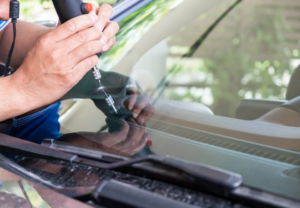Cockapoos For Sale In Ohio need daily physical and mental stimulation. They are adaptable and can live in most environments. They are devoted to their families and will happily return any affection you show them.
They enjoy games of fetch and can benefit from a short run to release their pent-up energy. Be sure to gently examine their floppy ears regularly, as they can trap moisture and cause infection.

Cockapoos have the intelligence and obedience of poodles and the sweet and affectionate nature of cocker spaniels, making them highly trainable dogs. They also tend to be hypoallergenic and shed very little so they can be a great choice for people with allergies or other concerns about pet hair. They are very happy in various living environments and get along well with children and other pets. Like any dog, however, they have pros and cons that prospective pet parents should consider carefully.
Training is a good way to calm a cockapoo because they are eager to please and will respond well to positive reinforcement. This makes them easy to teach basic commands and impressive tricks. It’s also important to establish a routine with your cockapoo, so it knows when you’re getting ready for walkies or playtime and when it’s time to settle down for the night.
Another way to reduce your cockapoo’s stress is by giving them plenty of exercise. A tired dog is less likely to misbehave and will be more comfortable settling at home for the night. Exercise can be as simple as games of fetch, a short jog around the block, or even playing tag in the backyard.
Although the cockapoo is generally healthy, they can inherit health problems from their parent breeds. One such problem is hip dysplasia, a condition where the kneecap becomes loose and “floats” in place. This can lead to pain, and your veterinarian may recommend surgery to fix the problem. Other conditions that cockapoos can develop include allergies and ear infections. These are common in many breeds of dogs and can be caused by a variety of factors, including items that are inhaled or eaten, as well as flea bites.
They’re easy to train
Cockapoos are eager to please and respond well to training using positive reinforcement. They also have short attention spans, so training sessions should be kept brief and fun. Avoid harsh training methods, as this will only make them anxious and less likely to listen to you.
These dogs are very social and love all members of the family, including children. They also get along great with other pets. However, they should be properly socialized as puppies to prevent resentment or aggression in later life.
A daily walk is a must for Cockapoos, as this will help them burn off some of their energy and keep their mind engaged. If you don’t have time to take your dog on a long walk, you can also try playing games such as fetch or tug-of-war to give them a mental workout.
Because of their moderate energy levels, cockapoos are ideal for families with varying lifestyles. They do not require much space and can easily be trained to play indoors with toys or even just on the couch. They are quiet dogs and don’t bark often, but may become agitated when they feel stressed or left alone for long periods of time. In these situations, it is recommended that they be given a calming probiotic or a calming treat to ease their stress.
As with any breed of dog, it is important to teach your cockapoo basic obedience commands, such as “sit,” “stay,” and “come.” This will set the foundation for a lifetime of good behaviour. Puppies are prone to biting during play, so it is essential to train them not to bite and to stop when they bite too hard.
They’re friendly
Cockapoos are intelligent and eager to please, making them great candidates for obedience training. They can be easily trained with positive reinforcement, which includes tiny treats and plenty of playtime. They also enjoy learning tricks and will thrive in advanced obedience classes.
Since they were bred as companion dogs, cockapoos are very affectionate and love to be near their owners. They will follow them around the house and may even nudge their hands to be petted. These dogs are also known to be sensitive and can become anxious if left alone for too long. In addition, their floppy ears can trap moisture and dirt, which can lead to ear infections.
As a result, they are best suited to people who have lots of time and energy to dedicate to them. They can get along with children and other pets, but they prefer to be close to their humans and can develop separation anxiety if not given enough attention. This is especially true if they are young and have not been taught how to be alone for short periods.
While cockapoos are friendly and adaptable, they will need adequate exercise to stay healthy. They should be taken on daily walks and play for 30 minutes to 1 hour. They can also benefit from playing with other dogs or doing exercises like swimming.
In addition to regular walking, cockapoos require daily brushing to avoid their hair from matting. They also need to be bathed at least once a week. During bathing sessions, the dog should be checked for any signs of ear infection. This can include a foul smell and a buildup of black or brown wax.
They’re lovable
Cockapoos are sweet dogs that love human companionship. They are a great choice for first-time dog owners, as they’re easy to train and require minimal maintenance. They also adapt well to a variety of environments, from urban apartments to sprawling farms. However, they do need daily exercise and mental stimulation to thrive.
These playful pups are a joy to spend time with, and they love making new friends and exploring their world. While they may get a little over-excited in company, they’re rarely aggressive and will warm up to strangers with kind words and gentle touch. Cockapoos also tend to be gentle with small children and babies, though it’s important that children are taught how to handle a dog properly.
Like all dogs, cockapoos are prone to some health issues, including ear infections and hip dysplasia. Fortunately, regular visits to the vet can help you keep these conditions at bay. They also love to eat, so it’s important to make sure their teeth are healthy and clean.
The best way to care for your cockapoo is to keep it groomed regularly, which includes brushing and trimming. Although they don’t shed much, their coats can become tangled or matted, so it’s important to brush them a few times a week and trim them every 6-8 weeks. You should also check their ears for signs of infection and brush their teeth frequently.
Cockapoos are incredibly lovable, and they will return your affection with equal devotion. They’re very social creatures and don’t do well alone, so they’re ideal for families with kids or other pets. They’re even known to make excellent therapy dogs because of their loving nature and calm demeanor.
They’re easy to care for
Cockapoos are intelligent, low-shedding dogs that do not produce much dander. This makes them an ideal breed for people who suffer from allergies, especially if they live with other pets or children. These dogs also learn very quickly and are easy to train, making them perfect for first-time dog owners. However, cockapoos need plenty of physical and mental exercise to keep them happy, so you should plan on spending at least 30 minutes a day with your pet.
Since cockapoos come from both cocker spaniels and poodles, they are very curious animals that thrive on training and activity. They are also incredibly loving, making them ideal companions for the whole family. While this makes them great companions for families, they can be cautious around strangers and may bark if they feel threatened. If you notice signs of anxiety or aggression in your cockapoo, it’s important to seek veterinary attention immediately.
Another common health issue that affects cockapoos is gastrointestinal issues, including gastroenteritis and an obstruction in the bowel. This can be caused by eating things like string, stones or cloth, which can get stuck in their gastrointestinal tract and lead to vomiting or diarrhoea.
It is recommended that you take your cockapoo to the groomer every 6-8 weeks to ensure that their coat stays healthy and shiny. They also require regular baths to prevent their skin from becoming dry and itchy. Make sure to use a quality shampoo and conditioner that is free from harsh chemicals. Also, since cockapoos have long floppy ears, it is important to check them regularly for signs of ear infections, such as a foul smell or black or brown wax.








